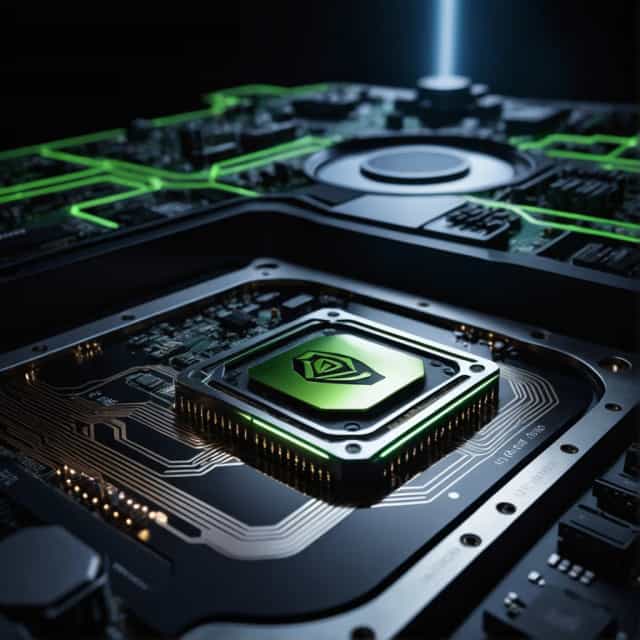
출처: Block Media
AI Market: A Modern Parallel to the Internet Boom
The debate over the valuation of the artificial intelligence (AI) sector is intensifying, fueled by discussions about whether current valuations are sustainable or overblown. However, AI is still in the formative stages of its development, suggesting that some elevated valuations may indeed be justified. Simultaneously, Bitcoin continues to solidify its stature as “digital gold,” cementing its role as a safe-haven asset in uncertain times.
According to Maja Vujinovic, CEO of FG Nexus, AI is revolutionizing industries at a pace reminiscent of the internet’s transformative impact in the late 1990s. In an interview with CNBC on October 8, Vujinovic likened the current state of AI to the internet's early days in 1997, highlighting its vast potential while cautioning that the clear winners in the sector are far from determined.
The Early Stages of AI: From Foundations to Applications
While there is ongoing scrutiny over whether some AI companies’ valuations can stand up to the reality of their operations—requiring billions in free cash flow to appear justified—Vujinovic agreed that such criticisms are valid. However, she noted that these evaluations often overlook an essential factor: the nascent nature of the AI industry.
“We are still in the early stages,” Vujinovic emphasized, explaining that current market leaders are primarily focused on establishing the foundational elements of AI. This involves manufacturers and developers channeling resources into building the chips, infrastructure, and support systems that underpin the broader AI ecosystem. Without these critical building blocks, the future development of AI-driven industries would be impossible.
Looking ahead, Vujinovic predicted that the industry’s center of gravity would gradually shift to the emerging “application layers.” These layers, encompassing innovative AI-powered services and software solutions, have yet to fully mature but promise to transform industries and markets once they scale. Similar to how internet applications like Google and Amazon redefined the web in the years following the dot-com boom, these AI-driven applications are poised to create unparalleled economic and societal impact.
Vujinovic also addressed regulatory concerns about AI’s high valuations, recognizing the need for prudent analysis of market fundamentals. However, she underscored the expansive potential of AI, emphasizing that investors should prioritize companies demonstrating real-world utility, scalable solutions, and genuine use cases.
“For investors, the focus should be on identifying businesses that fulfill pragmatic market needs,” she advised. Firms meeting these criteria, Vujinovic asserted, can justify their current valuations—positioning themselves as leaders of the next wave of AI development.
Bitcoin as Digital Gold in Uncertain Times
In addition to her analysis of AI, Vujinovic shared insights into Bitcoin’s evolving role in the financial landscape. With a deep history in the crypto space dating back to 2010, she highlighted Bitcoin’s resilience as a safe-haven asset capable of delivering long-term, market-beating returns.
“Bitcoin has consistently proven itself as a store of value during periods of uncertainty,” Vujinovic explained, though she acknowledged its role as a payment method remains underdeveloped. Still, its reputation as digital gold is becoming increasingly robust.
Recent market dynamics underscore Bitcoin's growing importance in financial portfolios. During heightened fears of a U.S. government shutdown, both Bitcoin and gold reached record highs, a phenomenon Vujinovic pointed to as a testament to investor confidence in Bitcoin as a secure refuge during economic instability.
“People are seeking certainty, and Bitcoin continues to fulfill that role,” she remarked. Vujinovic went even further, predicting that central banks may eventually hold Bitcoin in their reserves, marking a significant evolution in its recognition. She concluded by calling Bitcoin a key element of the “future” of financial systems.
Conclusion: Where AI and Bitcoin Converge
The parallels between AI’s ongoing evolution and the early days of the internet illustrate the immense potential of transformative technologies. While the AI market’s focus moves from foundational infrastructure to innovative applications, investors have the opportunity to partner early with firms that display real scalability and utility.
Likewise, Bitcoin’s growth from a niche cryptocurrency to a trusted store of value demonstrates how emerging technologies can integrate into traditional finance. As AI reshapes industries and Bitcoin strengthens its safe-haven status, both provide intriguing opportunities for investors willing to embrace innovation and adapt to the shifting technological landscape.










